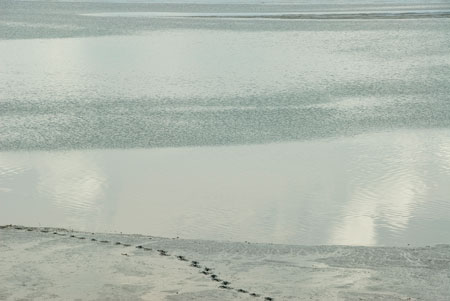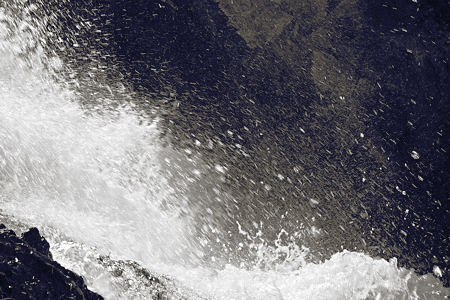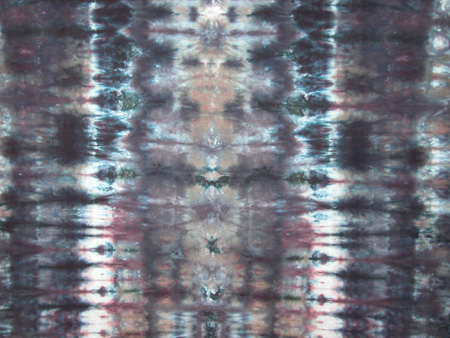
I am visiting the Wattenmeer (mud flats) where I grew up.
a multi-disciplinary dialog
Van Gogh did self portraits because he had no money to pay models. Rembrandt used it as a vehicle to improve his artistic skills as well as to study the minute emotional states inflicted by muscular inflections on his face. Women artists of the 1800’s did it because they were not allowed access to live models and social restrictions made it difficult for them to paint publicly. Others like Frida Kahlo examined the different psychological underpinnings behind the ‘self’ using the self portrait as a tool, a vehicle. Gentileschi used the portrait as a mask that tended to hide the viewer from the self that the artist wanted to conceal. There are so many different reasons for creating a self portrait.
It is also instructive (and fun) to read the opinions of Art and Perception contributors to this art form. more… »

I could be accused of being stuck on my waterfall project lately, but my excuse is that it seems to connect to various other recent posts and comments. Anyway, it’s the work that I’m closest to at the moment, so it makes sense to write about it while it’s fresh. Fresh enough that the ideas are still churning around without order, which in truth is how I like it. I’m inclined by nature to let things ferment in their untidiness, not attempting to resolve or define, hoping/knowing that that will happen on its own eventually.
So this post is partly a record of the connection between concepts and execution, between thinking about the photographs and making them. In the present case, this is a pretty loose and interactive connection, perhaps similar to David’s “chickens, then eggs, then more chickens…” or Leslie’s “dialogue with the idea going back and forth with the making in a pretty comfortable way.” Karl also has been considering the role of concept in art, and I think his question, “Is art something we make, or discover?” is about the same thing. In other words, do we create from a concept or learn by doing? The answer, of course, is that both go on at once, but how it plays out is always different, even for me alone on this single project.

Conceptual art represents concepts.
That seems obvious.
The simple statement has some interesting implications, however. Let’s explore by looking first at another art-form: still life.
What does still life art represent? The still life, obviously. Each still life painting shows a given set of objects. Is the still life art the same as the still life itself? Of course not. It’s a representation: the appearance of a still life on a canvas is an illusion.
Does the artist create the objects in the still life? Perhaps he or she might throw the vases and cut the flowers, but this is not essential.
Must the objects be valuable or beautiful? Of course not. The value of the still life art depends on the quality of the representation, not on the quality of the things represented.
Now, back to conceptual art. more… »

In an interview for a quilting magazine recently, I was asked why I liked oil paints. I found myself speaking lovingly about the names of paints — burnt sienna, cadmium yellow, quinacridone magenta, perylene black, French ultramarine.
My response surprised (even) me. I hadn’t actually thought of the names of colors as a reason to like a specific medium. Thinking it over, however, I came to understand why I fell into praising the precisely designated oil paints. And watercolor paints. And even acrylics.
It isn’t the names, charming as I find them, so much as it is that the names signify a specific color that holds fairly true across media and brands.
To understand the hold that standardized pigments have for me, you have to know that I began my color education with textile dyes rather than pigment paints. Once you have struggled with making art with dyes, you find that using pigmented paints seems ridiculously easy.
Here are reasons why dyes are inherently difficult to control.
Under the catchwords of accessibility and inclusiveness, a lot of artifacts in the art world are losing its original meaning and interpretations thereof. Simply put: We inhabit a culture of simplification and generalization with the hopes that unpretentious agendas would be understood and assimilated by a larger audience. This has been documented extensively in other fields and is now seen to be creeping into the arts as well. Two examples from either sides of the Atlantic would further illustrate my point. more… »